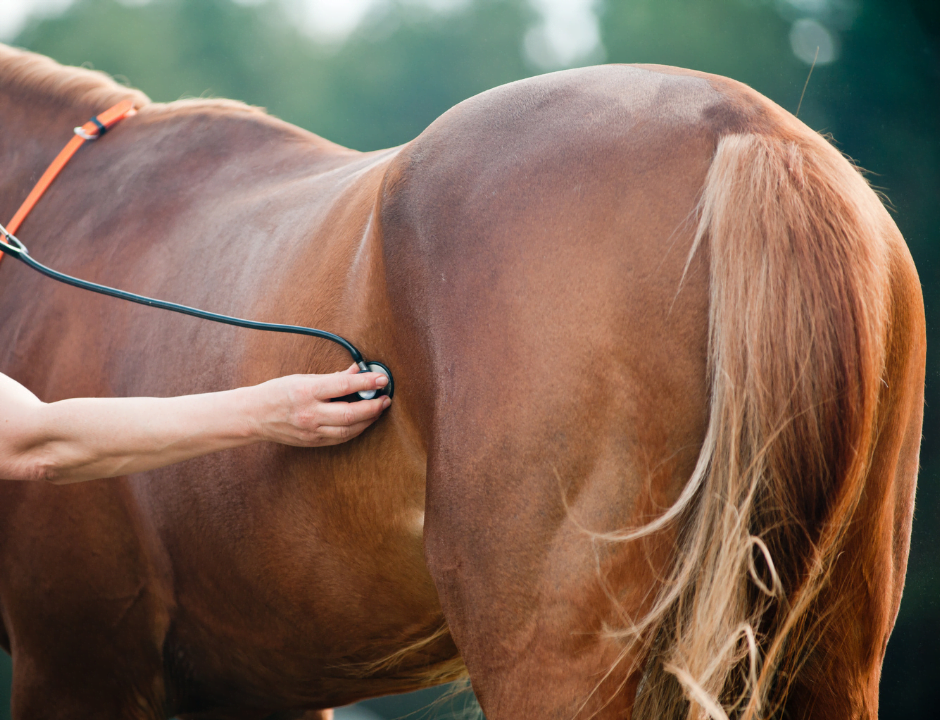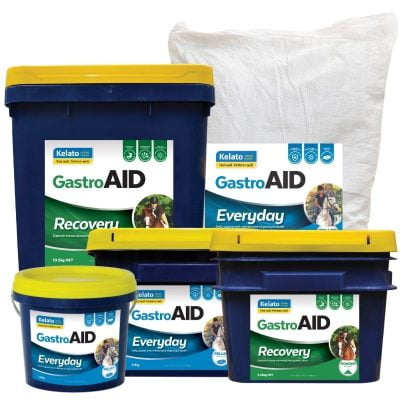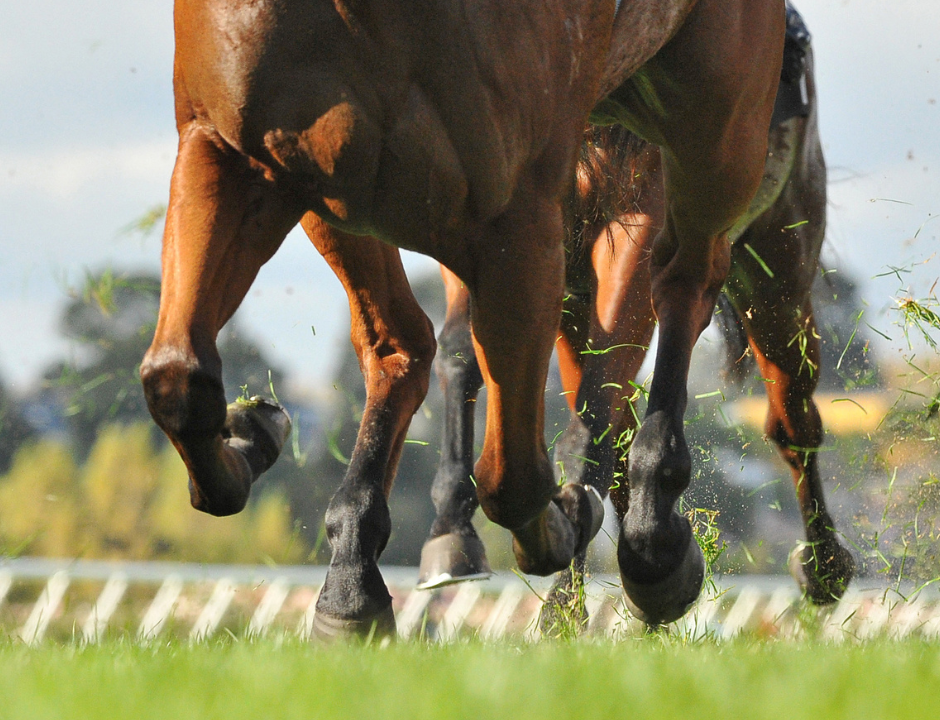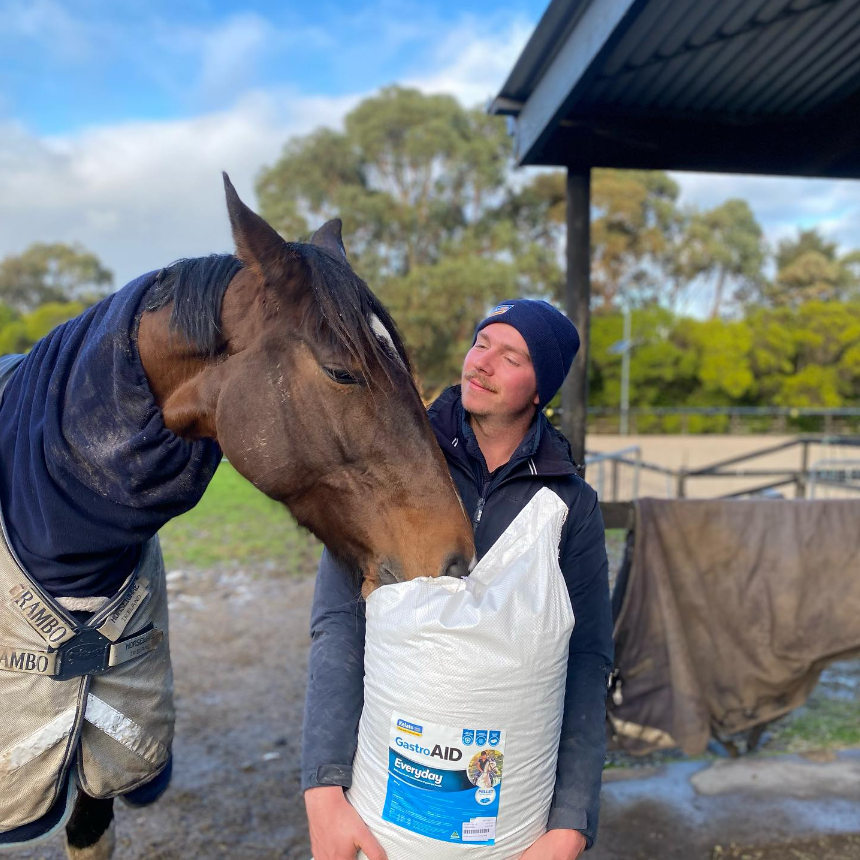Take the guesswork out of LIVE probiotics.
Most of us might be aware of the terms prebiotics and probiotics when it comes to choosing a supplement to take the best care of our horse’s gut health. But how many of us might be confused about what to look for when we want to feed our horses a LIVE probiotic?
Reminder: Probiotics are live microorganisms that when fed in adequate amounts may confer a health benefit on the host (World Health Organization, 2014).
Kelato uses strain-specific LIVE yeast probiotics rather than bacterial probiotics in Australia’s #1 gut health supplements, GastroAID Recovery and GastroAID Everyday. We have developed a series of steps in our checklist to help you when it comes to comparing live probiotics in supplements.
LIVE PROBIOTIC CHECKLIST
Step 1: Is the probiotic strain listed on the product label?
There are many beneficial functions to yeast probiotics, but we need to remember that each function is specific to an individual strain. For example, both GastroAID products contain a Saccharomyces cerevisiae yeast probiotic with the strain being l-1077 because we wanted the function of the probiotic to help stabilise the hindgut pH and stimulate the growth and activity of beneficial bacteria. As a BONUS to GastroAID Everyday, a Saccharomyces boulardii yeast probiotic with the strain being l-1079 is included with the specific function of maintaining tight junctions in the gut lining to help reduce gut permeability to harmful bacteria and to assist scouring horses.
Kelato utilises a targeted approach to gut health using specific strains of probiotics rather than having a huge list of different bacterial and yeast probiotics in our products in the hope that some of them might work. Using the strain-specific method in a gut health product takes out the guesswork and means you know you are paying for a product that works!
Step 2: Is the probiotic alive and will it stay alive until I feed my horse?
Make sure the probiotic being used is listed as either a “live yeast probiotic” or a “viable yeast probiotic” as this indicates that the product is alive. If a probiotic is listed as a “yeast culture” then this means it is NOT a pure form of live yeast.
A company can list that their probiotic is alive, but can they provide supporting documentation to show that their probiotic will STAY alive until your horse ingests it? For a probiotic to function and provide health benefits to a horse it needs to remain alive, all the way up until it reaches the horse’s hindgut. Live probiotics can lose their viability during the manufacturing processes of the final product, dramatic temperature changes, extreme pressures or exposure to moisture.
If you are unsure if the probiotic will stay alive, ask the company how the probiotic stays alive. If they can answer, then you are on the right track!
Kelato live probiotics use a specific technology that protects the live yeast against the pressures of the manufacturing process and coats the probiotic to microencapsulate it as an added layer of protection. This means you can have CONFIDENCE in our products.
Step 3: Do the directions for use indicate that it should be fed daily?
Live probiotics do not often colonise the hindgut to reproduce and provide benefits after only being fed a few times. For probiotics to have their desired effects they need to be fed consistently. This highlights the importance of ongoing probiotic supplementation for hindgut health.
Step 4: Does the probiotic have proven results?
Would you ingest a probiotic if you didn’t know if it was scientifically backed by research for humans? The answer is probably not so why should you feed your horse a probiotic if you don’t know if it has been tested? If you are not sure whether the probiotic is backed by research don’t forget to ask the manufacturer of the product!
Kelato’s S.cerevisiae strain l-1077 live yeast probiotic has research-proven results that show it can successfully reach and survive in the hindgut (Faubladier et al. 2013). Research has also shown that it helps stabilise hindgut pH levels and increases the level of good bacteria in the hindgut (Faubladier et al. 2013; Medina et.al 2002). Our other probiotic, S. boulardii strain l-1079, has research-proven results to show it can reach and survive in the hindgut, helps reduce watery diarrhoea and helps to reduce harmful bacteria and toxins “leaking” into the bloodstream (Desrochers et.al 2005; Brousseau et al. 2015; Lessard et.al. 2009; Furr et.al 2014).
What about some research?
To read all the research about our probiotics head to the blog: https://www.kelato.com.au/equine-articles/probiotics-is-there-research-to-back-them-up
Once you have used the handy checklist, come join the THOUSANDS of horse owners who choose the highest-quality gut health care – Kelato’s GastroAID Recovery and GastroAID Everyday! Get in touch TODAY on 1800 KELATO or email technical@kelato.com.au.





